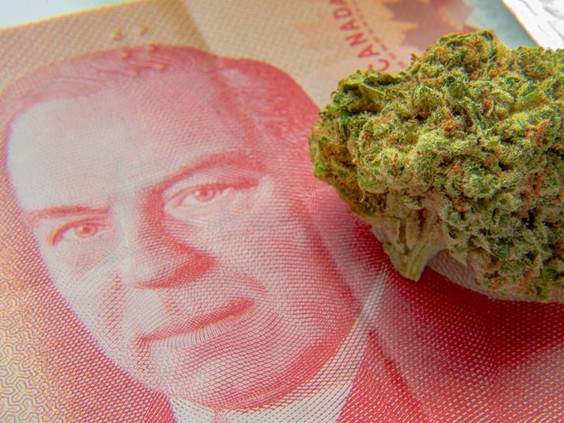You are here
Home 🌿 Recreational Marijuana News 🌿 Cannabis prices down, but tab for hard drugs up in U.S. states with legal weed 🌿Cannabis prices down, but tab for hard drugs up in U.S. states with legal weed

More research is needed to determine if a new study exploring how cannabis legalization influences illegal drug markets is correct in finding that prices for weed falls but those for hard drugs rises.
“Our exploratory findings suggest that markets for illegal drugs may not be independent of legal cannabis market regulation,” lead author Angélica Meinhofer, an assistant professor of population health sciences at Weill Cornell Medicine, notes in a statement from the Society for the Study of Addiction.
Published in Addiction, Weill Cornell Medicine compared outcome changes between 11 recreational cannabis laws (RCLs) states and non-RCL states.
To do so, investigators considered pooled crowdsourced data from Price of Weed and StreetRX, as well as administrative data from System to Retrieve Information from Drug Evidence and the National Forensic Laboratory Information System. Since the implementation of RCLs in different U.S. states was staggered, investigators used a difference‐in‐differences design.
The gathered data shows RCL implementation was associated with a 9.2 per cent decrease in street/illegal cannabis prices and an even bigger, 19.5 per cent, drop in low-quality street/illegal cannabis prices.
That was not the case for street heroin, however, whose price rose 64 per cent and its potency 54 per cent, the statement reports. Price hikes for street/illegal oxycodone and hydrocodone were less dramatic, ringing in at 7.3 per cent and 5.1 per cent, respectively.
The biggest drop-off occurred with regard to law enforcement seizures. Overall, the RCL states saw a 93 per cent decline for cannabis and more than a 50 per cent drop in seizures of heroin, oxycodone and hydrocodone.
As of 2021, 17 states and the District of Columbia have implemented RCLs, the study notes. “As more states move towards legalization and additional post-RCL implementation data become available, we’ll need to do more research to determine whether recreational cannabis laws cause those changes in the illegal market and what happens in the long-term,” says Meinhofert.

The biggest drop-off occurred with regard to law enforcement seizures. / PHOTO BY GETTY IMAGES
She acknowledged that the crowdsourced data on the price and self-reported quality of illegal drugs “may be subject to error and sampling bias.”
A review published this year by the Cato Institute, again using crowdsourced data in legal states, determined the monthly average prices of marijuana in Colorado, Washington, Oregon and California. “In Colorado and Washington, monthly average prices declined post‐legalization and have remained fairly steady over the past several years,” the institute reports.
Another study published in 2017 determined “there were no effects on the prices paid for medical or recreational marijuana among state-representative samples of residents within the short four- to five-month window following legalization.”
A Canadian study last year found that in the two months after the country legalized weed, “illegal cannabis was less expensive, with higher labelled THC content than legal cannabis, although the scope of these differences was more modest than estimates from other crowdsourced and self-reported data.”
But the Ontario Cannabis Store (OCS) reported last fall that a major goal of legalization — combating the illicit market — was getting traction. The average price of dried flower per gram on the provincial retailer’s website for the Apr. 1 through June 30 quarter was $7.05 including taxes, which OCS noted is less than the average $7.98 for flower available through illicit mail-order sites.
420 Intel is Your Source for Marijuana News
420 Intel Canada is your leading news source for the Canadian cannabis industry. Get the latest updates on Canadian cannabis stocks and developments on how Canada continues to be a major player in the worldwide recreational and medical cannabis industry.
420 Intel Canada is the Canadian Industry news outlet that will keep you updated on how these Canadian developments in recreational and medical marijuana will impact the country and the world. Our commitment is to bring you the most important cannabis news stories from across Canada every day of the week.
Marijuana industry news is a constant endeavor with new developments each day. For marijuana news across the True North, 420 Intel Canada promises to bring you quality, Canadian, cannabis industry news.
You can get 420 Intel news delivered directly to your inbox by signing up for our daily marijuana news, ensuring you’re always kept up to date on the ever-changing cannabis industry. To stay even better informed about marijuana legalization news follow us on Twitter, Facebook and LinkedIn.




